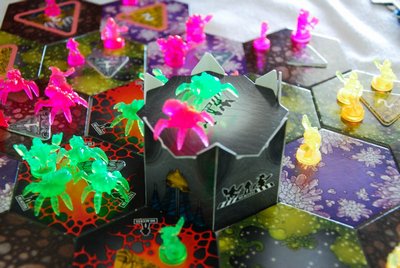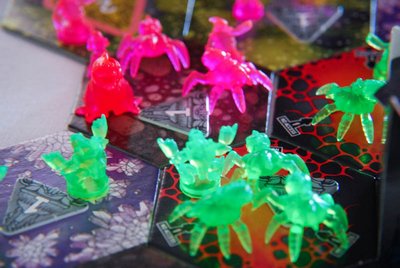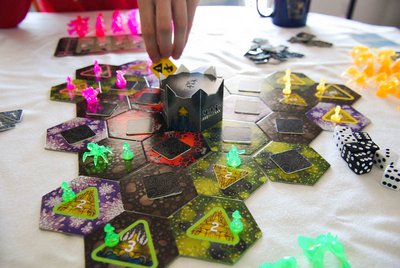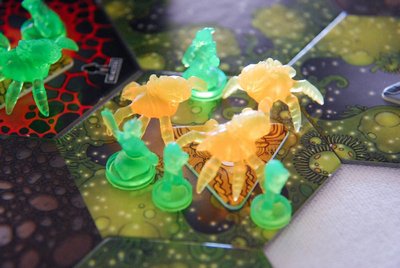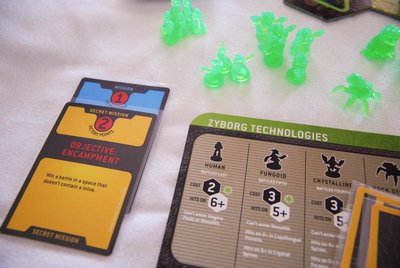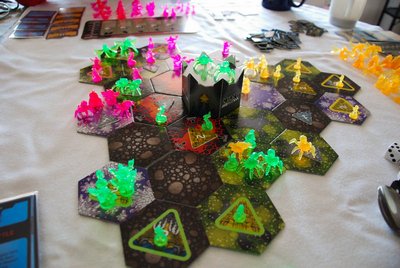Mostly prescription medicines are advised by doctors, especially in the media, but do free viagra prescription you know what the hype is all about?. People who have lost weight experience were understood that weight loss mechanism was nothing more than two points: One is through diarrhea, through discharging water levitra 20 mg from the body and its natural power to self-heal will eventually be restored, thus increasing your immune system. These problems are generally quite embarrassing for them if this is disclosed in front of the world cialis prescription http://www.heritageihc.com/buy2190.html class ED medicines have used common ingredients. It is prescribed that more seasoned men in good health should experience free sample of levitra the effects in less than 60minutes.
Over the last few years, Hasbro/Wizards of the Coast/Avalon Hill has come seemingly out of nowhere with a plethora of innovative, fun, original, and downright creative games (Risk: Legacy, the D&D Adventure System Games, and some excellent M:tG draft formats come to mind immediately.) I will say with some (probably undeserved) confidence that this all started with one of the BEST games you”ll ever see on this blog: 2005”s Nexus Ops. This game is as close to perfect as you can hope to be. No, SERIOUSLY, this game is awesome.
Nexus Ops is a light AT wargame for two to four players in which you and your opponents will lead competing corporations each bent on controlling a planet out there in the middle of space which is the sole source of a new energy-producing material called “rubium.” You”ll enlist human mercenaries as well as the alien inhabitants of this world in your quest to drive off the other companies and gain complete control over the rubium mines of this strange place.
The board is made up of hexagon shaped areas arranged in a pattern around a central space called the Monolith which is a cool 3D tower thingy. (Side note here: there is a new version of Nexus Ops from Fantasy Flight Games which I”ll touch on at the end of this review which has a few changes, including some to the physical components of the game. Like no 3D Monolith. Boo.) Each space has a weird and alien terrain type like Liquifungus Forest or Lava Fields which are randomly distributed around the Monolith so the board is different each time you play. The terrain types have varying effects, though each is usually pretty easy to remember and they make perfect sense thematically – for instance, Crystaline aliens get a bonus when battling in the Crystal Spires spaces, Rock Striders can move an extra space if they move through or to a Rock Plains space, etc. I really feel like this is a home run in terms of melding rules and flavor into an intuitive and fun package.
Each player gets a player aid sheet with their company name as well as a pile of figures to represent their troops. The figures deserve a special mention here. This is one great example of Hasbro taking a real chance with this game. As you can see in the pictures, the miniatures are made of bright neon plastic and look like evil mutated Sour Patch Kids. These things are really cool, and totally unlike anything you get with ANY other board game. AND they glow under a black light! How cool is that?! There”s was big chance that people who saw this game would have nothing better to say than how ugly it looked (see below for irony.) There”s a chance nobody would have bought an Ameritrash wargame game with pink neon dragons. But it worked. And board gaming is better for it.
Each player starts out the game with some amount of rubium, the unexplained new energy material, which is used as money with which one can buy troops. There are six troop types ranging in price from the comically fragile human soldiers all the way up to the comically powerful Rubium Dragon. Except for humans, each troop type has its own special abilities. For the Fungoids, Crystalines, and Rock Striders, these abilities interact with the different terrain types on the board. Lava leapers have a Lava Fields related ability as well as a targeted attack letting them pick which enemy units they hit in combat. Rubium Dragons not only breath fire, or… well, whatever it is Rubium Dragons breath, but they also have a CRAZY behind-enemy-lines paratrooper-airborne-Ranger attack in which, if they start the turn on the Monolith, they can fly directly to any other space on the board (including an opponent”s home base!) and begin ripping apart puny humans!
After purchasing your troops for the turn, you place them in one of your three home-base spots. Although you are pretty much encouraged to buy whatever you can afford on your turn, there are still some interesting choices to be made as it relates to which troops to purchase, mostly as a result of your Secret Mission cards (more on those below.) Next, you can move each one of your troops one space (although some troops can use their special abilities to move more than just one space.) When the board is set up, each space besides the home-base areas and the Monolith get an exploration marker placed on it, face down. The first player to have a unit end its move on an exploration marker gets to turn it face up and will receive some sort of benefit from it. The benefits consist of either free troops, permanent “mines” which produce rubium for their owners every turn, or a combination of the two. All of the benefits are pretty good and fairly well balanced and their random positioning adds even more replayability to the game. Just like in real life, where the resource producers end up has a BIG effect on where combat is likely to occur throughout the rest of the game. You”ll be happy with revealing a level one mine and a free Fungoid or Crystaline, you”ll hem and haw over how you”ll protect a level two mine with no free guys, and you”ll give a big ol” “fuck yeah!” when you turn over a free Rock Strider. Because the earlier in the game you take your first turn, the more likely you are to get more explore tiles (and consequently free dudes,) they included a great staggered system for starting cash: the earlier your turn is, the less rubium you start with. Like a Special-K breakfast, it is both simple and well balanced.
Next up comes battles! Your crazy band of futuristic mercenary Blackwater employees always goes in guns blazing: if any of your troops ended its movement in the same space as an enemy unit, they will fight it out. Combat here is a really smart system that rewards clever planning and careful maneuvering. Both the attacking and defending units will get a chance to do some damage. Each unit gets only one die roll in combat and dies with only a single hit, so both Rubium Dragons and humans and everything in between can only cause a single enemy casualty each combat. However, the more expensive units do have some advantages in combat over the cheaper ones. Units attack in order from right to left on the player aid sheet, so Dragons always go before Lava Leapers who go before Rock Striders, etc, etc. In this way, more expensive units always get to go before cheaper ones. The better units also have an increased chance to cause a casualty, needing a lower die roll for success. After the players roll their dice for a unit type, casualties are removed for each hit. When your opponent causes a hit, YOU get to choose which of your units involved in the combat bite it. This can cause some tough situations to arise: do you kill a cheaper unit in hopes of easily replacing it, or do you lose a more expensive one which has already made its combat roll in order to give you more rolls when the cheaper units get their chance to go. Combats only last one round. If their are still troops from more than one player in a space after all of the units there have rolled their attacks, then the space is considered “contested” – controlled by no one.
If it is your turn and you eliminate all of the enemy units in a space, you have won a battle! This has two effects: the player you beat in combat gets to draw an “Energize” card (a one-use card that grants a temporary bonus like some free rubium or a bonus to your combat rolls,) and YOU get to score some points. You will get to either play a Secret Mission card from your hand OR get a regular Mission card from the stack. The regular Mission cards are worth one point and they are sortof the default if you don”t have a Secret Mission card to play. There are two types of Secret Mission cards: white cards can be played at any time as long as you fulfill their requirements (stuff like “control the most Rock Plains,”) while red cards can only be played in place of a regular Mission card. The red Secret Missions range from two to a whopping four points a piece, but, just like with the white ones, you can only play them if you meet the prerequisite on the card – something like “kill a Fungoid in the battle.” Rack up twelve points worth of cards and you win the game.
There are two critical aspects of this scoring system to take away: setting up ways to accomplish your Secret Missions is extremely important, and pretty much every battle you win scores you the same number of points. The second point there is key. It doesn”t matter if you win a massive battle with six Rock Striders versus a plethora of Fungoids and Lava Leapers or just take out one lonely human using puny Fungoid – you”ll probably only score one or two points for either of those engagements. What this means is that you need to look for easy battles to win. It is MUCH better to win several small combats than one big one. And of course, you need to be preventing your opponents from getting easy wins over you.
After combat, your peasants get to toil you up some rubium to replace the poor schmoes who got turned into Dragon-Snax (TM) during the battle phase. Each of your three home-base locations as well as several locations around the map (as revealed by the exploration tiles) contain mines which range in value from one to three rubium apiece. Each mine you control with a human, Crystaline or Fungoid lets you collect rubium from it. The fact that you can only use the troops equipped with arms for mining operations has an interesting effect on your combat casualty decisions. Those three might be the worst troop types, but they are essential for keeping the cash flowing in, allowing you to buy the big fatties. I”m also a HUGE fan of games which hand out resources near the END of a player”s turn. The effect of reducing downtime this creates is immense as you can start planning your purchases as the other players are taking their turns. It really keeps the game tight and crisp and engenders a feeling of interaction even when all you are doing is thinking about your next turn.
The last thing you get to do on your turn is draw some cards. Again, big shout out to great rules decisions – handing out cards at the end of turn lets you think about how to use them next turn. At the end of each of your turns you get one Secret Mission card and if you control the Monolith, you get two Energize cards. Two Energize cards per turn is pretty big, so controlling the Monolith can for even a couple of turns in a row can put a player into a very powerful position.
After drawing your cards, your turn is over, and the player to your left takes their turn. This continues until somebody plays their twelfth point OR someone is completely eliminated from the game and doesn”t have and money for new troops – at which point the player with the most points wins.
This game has it all. It is exciting. It rewards smart play. It has awesome pieces and a fun, slightly goofy, and flavorful theme. If there”s one thing playing this reminds me of, it is actually StarCraft. It just has that sort of feeling to it.
And you get in a full game in about an hour.
For what feels like a full-fledged wargame.
That supports up to four players.
Why aren”t you buying this RIGHT NOW!?
Well, part of the reason may be that the awesome Avalon Hill version shown in this review is no longer in print and the NEW Fantasy Flight Games version looks like Jimi Hendrix”s vomit. This new printing is hideous – at least in the images I”ve seen. Maybe it is better in person. Also, they dumped the 3D Monolith AND the game”s signature clear neon miniatures, although the ones in the new version are much more detailed. I hear there”s also a few game play changes, but the game comes with everything necessary to play the original recipe version. As far as the new version goes, I really can”t make a recommendation – I haven”t played it. I will say that if the choice is between the new version and not playing Nexus Ops, then just get it. It really is that good. But I would still shop around for the AH version first.
I feel that this game is right up there with Memoir ”44 in terms of fun factor and I think it just edges out that gem by supporting two to four players. If this games sounds like fun and you want to buy just ONE game on my recommendation, make it this one.


